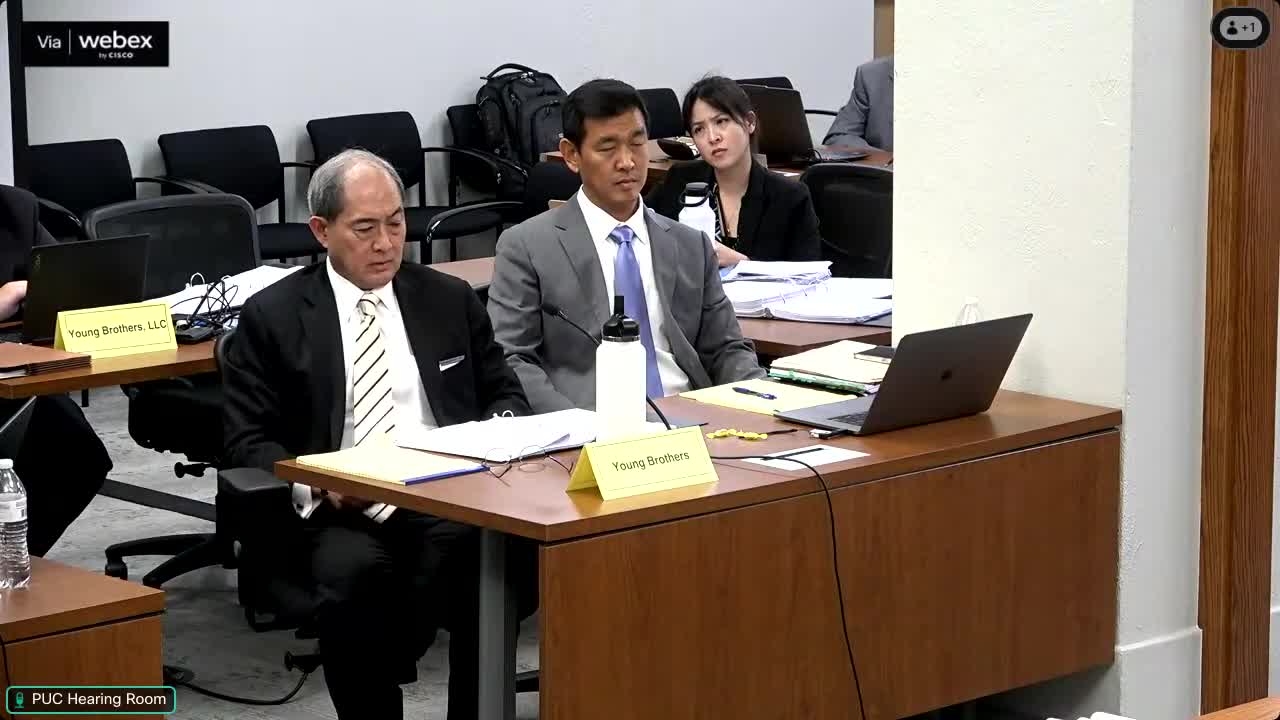Doctor Brubaker Discusses Economic Forecasts Amid Hawaii's Changing Cargo Trends
October 01, 2025 | Public Utilities Commission (PUC), Executive , Hawaii
This article was created by AI summarizing key points discussed. AI makes mistakes, so for full details and context, please refer to the video of the full meeting. Please report any errors so we can fix them. Report an error »

The ongoing Evidentiary Hearing on Young Brothers' 2025 Rate Case took a deep dive into the complexities of forecasting and price elasticity during its second day, with expert testimonies sparking significant discussions among the Public Utilities Commission in Hawaii.
Central to the day's proceedings was Dr. Brubaker's testimony, which raised questions about the relationship between price changes and cargo volumes. The discussion highlighted the challenges of accurately forecasting demand in a fluctuating economic environment. Dr. Brubaker admitted that while he had run a forecast model for his report, he had not examined the correlation between price elasticity and cargo volumes, a critical factor in understanding consumer behavior.
The hearing also saw objections regarding the cross-examination of witnesses, particularly concerning Dr. Brubaker's participation. Some participants expressed frustration over the selective nature of objections, emphasizing the need for a fair examination process. The commission noted these concerns but allowed the cross-examination to proceed, underscoring the importance of thorough inquiry in the rate-setting process.
Dr. Brubaker further elaborated on the distinction between macroeconomic and microeconomic forecasting approaches, explaining that while his model focuses on aggregated data, the nuances of individual customer responses to pricing remain elusive. He acknowledged the difficulty in merging different forecasting models, suggesting that while collaboration could be beneficial, the inherent differences in their focus present challenges.
As the hearing progresses, the implications of these discussions could significantly impact the rate-setting process for Young Brothers, with the potential to shape future economic strategies in Hawaii's transportation sector. The commission's ongoing deliberations will be crucial in determining how these complex factors will influence rates and service delivery in the coming years.
Central to the day's proceedings was Dr. Brubaker's testimony, which raised questions about the relationship between price changes and cargo volumes. The discussion highlighted the challenges of accurately forecasting demand in a fluctuating economic environment. Dr. Brubaker admitted that while he had run a forecast model for his report, he had not examined the correlation between price elasticity and cargo volumes, a critical factor in understanding consumer behavior.
The hearing also saw objections regarding the cross-examination of witnesses, particularly concerning Dr. Brubaker's participation. Some participants expressed frustration over the selective nature of objections, emphasizing the need for a fair examination process. The commission noted these concerns but allowed the cross-examination to proceed, underscoring the importance of thorough inquiry in the rate-setting process.
Dr. Brubaker further elaborated on the distinction between macroeconomic and microeconomic forecasting approaches, explaining that while his model focuses on aggregated data, the nuances of individual customer responses to pricing remain elusive. He acknowledged the difficulty in merging different forecasting models, suggesting that while collaboration could be beneficial, the inherent differences in their focus present challenges.
As the hearing progresses, the implications of these discussions could significantly impact the rate-setting process for Young Brothers, with the potential to shape future economic strategies in Hawaii's transportation sector. The commission's ongoing deliberations will be crucial in determining how these complex factors will influence rates and service delivery in the coming years.
View full meeting
This article is based on a recent meeting—watch the full video and explore the complete transcript for deeper insights into the discussion.
View full meeting
